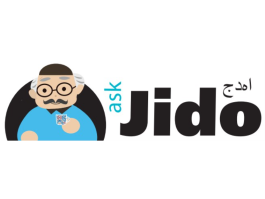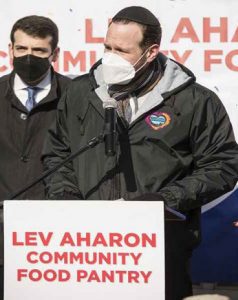Should a young family with a stay-at-home parent and little children be expected to shell out thousands for summer day camp, when it’s technically not necessary?
“When a camp is well-run, there is nothing like it for the kids. They gain social and emotional skills, in a low pressure environment…”
Frieda Schweky
Allow me to introduce myself.
I’m a fulltime photographer and parttime writer, who has contributed regularly to this magazine for the past several years. I’m also a dedicated wife and mother of three living in and amongst the community. Many of my articles in recent months are just as relevant to me as I’m sure they are to you – reporting on how during the pandemic many moved to Deal from Brooklyn, started a business, or gave birth. Since last autumn, my focus has been on community “hot topics” and “roundtable style” articles such as the one you’re about to read. These articles put a finger on the pulse of the community by interviewing ordinary community members about things we all discuss with each other. Up until now I have been writing from a third-person perspective, so I didn’t deem it appropriate or necessary to introduce myself. However, for this article and most likely the coming ones, I’ll be writing from a first-person perspective. I hope you enjoy it! For more info about me or any inquiries you may have about photography, head to Instagram and reach out! @friedaschwekyphoto
Across the nation, camp is seen as an option, not at all the standard or the norm. It’s something that’s available for kids in the summertime if wanted or needed. Many American camps run just for a couple of weeks, or a few hours a day. In our community, of course, the situation is much different. For the past 50 years, maybe more, Jewish day camp has been the standard arrangement for our community’s children during the summer. Our camps are, for the most part, fun, organized and safe, and overall, we can agree that they do a great job entertaining our children during summer break. Of course, camp entails a considerable expense, but as with many things, it’s just what we do.
The Summer of 2020
Last year, due to the COVID-19 outbreak, the majority of our camps had to reluctantly close their doors. This led to a whole host of creative solutions. Many community members took up the challenge of making outdoor camps, using the parents’ homes, allowing the campers only in backyards and bathrooms. This was great, because some camp is better than no camp, but generally, this meant a shorter day, and quite obviously, no bus. This was a much cheaper arrangement, but if you do the math, you’ll find that parents were paying more per hour than they did for regular camp. Still, parents enjoyed the break after months of being quarantined with their children, and ended up paying less than half than they ordinarily pay for camp.
Many parents organized a “round robin” system, whereby each parent took turns entertaining all the kids in the group. This was basically free, other than the cost of supplies and lunch. However, many mothers found this arrangement very difficult.

Another option, of course, was keeping the kids home. For working parents, this wasn’t ideal, to put it mildly, but still, many people did what they had to do. The summer of 2020 was the first summer when you’d regularly catch our community’s children on the beach at any hour of the weekday. Parents started to take full advantage of their pools and local parks (the ones that were open) to keep their kids busy.
Dispensable or Indispensable?
No matter how, or how well, they managed during the summer of 2020 without camp, the experience has left parents wondering whether traditional summer camp really is the only option. Given the high cost of camp, which – we may assume – cannot be lowered (the government does not regard summer camp as an essential service which could ever be deemed eligible for public funding), and seeing that we went through a summer without it, should it continue being the standard norm? Unlike school, summer camp is not, fundamentally, an educational framework. Missing summer camp is not likely to lower a child’s chances of professional success like missing school would. Should a young family with a stay-at-home parent and little children be expected to shell out thousands for summer day camp when it’s technically not necessary? Are their acceptable solutions or alternatives?
Of course, each family and each child is different, and a variety of different considerations are at play. When kids reach a certain age, social pressure becomes an important factor. They will feel left out if their friends are attending camp and they aren’t. The parents, too, might be asked uncomfortable questions by other parents who hear that they are not sending their children to camp. And, for families with two working parents, the financial burden of camp is likely offset by the double income that necessitates a full-day framework for the kids. As a fulltime photographer, I need my kids in camp, as the spring and summer months are, baruch Hashem, filled with parties, events, and photoshoot opportunities. Last summer was one of my most difficult summers, as I needed to schlep my kids back and forth to backyard camp, which operated for a relatively small number of hours, while juggling photography work and housework. The financial advantages weighed heavily – but not heavily enough for me not to enroll them in camp this summer. (They’re already enrolled, and I’ve been sending small payments to the camp whenever I can so the expense doesn’t hit me like a brick right at the start of summer!)
With all these thoughts circulating through my mind, I set out to find out what some people in the community think.
“In My Book, It’s a Right”
Abe Manopla (aka Mexican Pacino) is well-known for the attention he helped bring to the plight of agunot (“chained” women whose ex-husbands refuse to grant them a halachic divorce). His Instagram live interviews had many people captivated and had a significant impact. He has since moved on to other important community topics such as the tuition crisis, so I figured his voice would be an important one in the conversation surrounding the dispensability or indispensability of summer camp.
Most of my interviews are done via telephone, but in true Pacino fashion, Abe suggested a live interview and welcomed the rest of the community to listen in live and weigh in via comments.
We began discussing how last year’s closing of summer camps suddenly made it acceptable to keep your kids home or find cheaper alternatives.
“It was a gorgeous monetary break,” Manopla said about his family’s experience in the summer of 2020. “I enjoyed it. I was even able to buy a house with that break, by the way.” He explained, “I have a family of four, three of them are…[camp] age. It’s a $10,000 bill right there for this coming summer, and it does hit you from nowhere.”
That’s not to say that Abe opposes summer camp. He clarifies that he’s “not against it,” and that camps “provide a very good service.” Moreover, when asked if he thought camp is a privilege or a right, Abe emphatically replied, “It’s a right! In my book, it’s a right. I work, my wife works, and we have no choice. In our community, it’s a right, bottom line.”
Many of those with whom I’ve discussed this topic have expressed the same sentiment – that in our community, camp is a right, not a privilege.
In my interview with Abe, we discussed the additional financial pressure involved in summer camp, and how exacerbating a family’s economic burden can have deleterious effects on marriage. Abe also took this opportunity to publicize his cheaper camp alternative – Surf and Study, a surf camp for boys that keeps the Torah fresh in their minds throughout the summer while keeping them active in the ocean.

“I Discovered That it is Not Impossible”
My friend Leah Nachmani (aka @dumbanddelish) kept her children home for the summer of 2020 because of the pandemic, and because it made sense financially. This year, she finds herself doing something she never thought she would.
“I always assumed I’d send my children to camp from toddler stage and on, but after seeing how I survived at home last year, I thought I might as well save that huge chunk of money while I can,” Leah says. “It wasn’t fun or easy for me, but I discovered that it is not impossible. They’re still so young that they don’t know what other kids their age are doing, so they won’t feel they’re missing anything.”
What, then, is Leah planning for her kids this summer, if they’re not attending camp?
“We’ll be at the beach every day. I’ll be spending $1,500 for the whole family for the summer, rather than $3,500 per kid and then still needing to entertain myself and baby.”
This made a lot of sense to me. If you’re not working, and you don’t mind the schlep to the park or the beach – or, better yet, you have a pool in your own backyard – why should you have to cash out on alternate summer entertainment?
“The Children Expect to Go”
Another community parent, who wished to remain anonymous, shared the following thoughts on the topic:
“This is the first year when we were able to pay for camp in advance. Years prior, it was always a stressor for us, mainly me. I couldn’t imagine how we would all of a sudden be able to pay this extra-large camp bill that was due on the first day of camp. My husband always assured me that Hashem would send the money in time, and that everything would be fine. Some years this was the case, but others, I had to send small payments throughout the summer until I eventually paid it off. It didn’t feel good, and the camp wasn’t always happy about it, but we did what we could to make it happen. Last year was a relief. Backyard camp wasn’t fulltime, and I had to carpool my kids around, but at least it was a financial break for us, costing a quarter of the price of real camp. I’m not saying that real camp isn’t worth the price for my kids, but if I’m sending my two-year-old, she’s not going on trips and doing all amazing things, so I don’t understand why it should be $3,500 for her.
“I feel that in this community, camp is a right, not a privilege. I admit that if I absolutely didn’t have the money for it and had to keep them home, I would be capable, because I don’t work, but this is not the norm. We’re used to a certain way of life, and the children expect to go. All of their friends are going, and so we have to send.”
As for her comment about the cost for her two-year-old, it is true that camps aren’t taking toddlers on exciting trips, but having worked two summers as a tiny tot counselor in Camp Ora, I can attest that it takes competent morahs and constant attention to run an organized group of toddlers doing various summer activities. (Also, there are diapers…) These staff members are generally older and expect real salaries; no one is putting teens in charge of babies.
“There is Nothing Like It”
Rena Golden, former Program Director at DSN (Deal Sephardic Network), and current owner and operator of Bashes By Rena, a birthday party planning business, also runs the “Summer by Rena,” program, a Pre/Post Camp, and other daily mini camps when there is no school. In 2020, her summer program took on the form of a backyard camp – which my own kids attended. It was fantastic. I was curious about her thoughts on this topic – both as a camp director, and as a parent.
“I have a unique perspective on camp because I get to see both sides,” Rena said. “Parents see it as a costly but necessary additional expense, both for child care and for community. At times, we could feel like we ‘have’ to send our children to certain camps just to keep up.
“As a camp director, I know that camp is super costly to run. Every activity must be perfectly planned by talented staff throughout the year. We need to pay for supplies, busing, trips, lunch, snacks, water, special shows, and all those awesome activities. These activities have a high cost, especially for bigger camps that run on a larger scale. Just today, I booked pony rides, petting zoos, a magic show, and face painting for my upcoming pre/post camps. It’s startling to see what we spend.”
Rena emphasized in particular the vital importance of hiring an exceptional staff.
“Think about the staff you need to make a camp run smoothly. You need head morahs, teachers for sports, art and music, and more. It’s very important to hire the right people. The better the staff, the more it takes to find them, and it is also the largest expense.”
There are also various other costs which, I must confess, I never took into consideration when discussing the sky-high cost of camp with my friends.
Rena expressed her opinion that even the little ones have an enormous amount to gain from the camp experience: “I truly believe in the importance of camp for young children. When a camp is well-run, there is nothing like it for the kids. They gain social and emotional skills, in a low-pressure environment. They get to do things like sports, fun science experiments, learn how to cook or bake, art projects, and learn simple games and skills such as lanyard and red rover, my favorite camp game.”
Rena added that it is especially important to go to camp in our community because, in her view, “many of the enrichment activities that we learn in camp are things that our schools just do not have time to teach due to our dual curriculum.”
We’re All in This Together!
After researching and writing this topic, my conclusion is: both sides are right. Many parents struggle to pay for camp but see the immense benefit they provide, and camps offer a valuable service that is, by nature, costly. We should feel fortunate to have a wide array of options for entertaining our children in the summertime. Especially after last year, camp can now be defined as many different things. A silver lining of 2020 may have been the normalizing of cheaper options so parents don’t have to bend over backwards to financially make summer happen. Keeping your kids home, taking them to a park, letting them play at a friend’s pool – we’ve now seen that this won’t be the end of the world…
Taking a step back, this conversation marks an important contribution to the very significant trend that has grown across the world this past year – normalizing talking about things we don’t normally talk about, in a sincere, open-minded quest for solutions that work. It used to be the norm not to talk about financial burdens such as tuition, rent, summer homes, vacations, camp, and other things we’re just expected to be able to afford (with a smile). But no, it’s not easy, and yes, it’s okay to acknowledge the difficulty and address it. When we open up topics like this to a wider crowd, we get people talking and thinking of creative solutions to real, everyday struggles that we all face. We also create a sense of unity, because, after all, we’re all in this together.
Wishing all of you a safe, healthy, and happy summer!


















